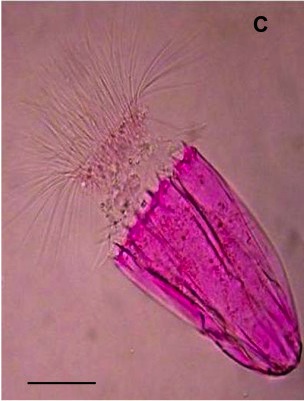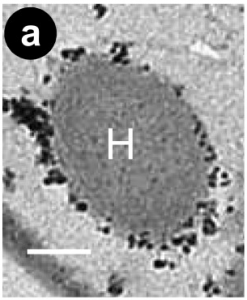
While there are quite a number of single-celled microbes that live in environments without oxygen (they’re anaerobic), multicellular organisms have now been discovered, living near the bottom of the Mediterranean Sea, that also do not need oxygen.

What’s really neat, and creates a great teaching point, is that these anaerobes don’t have mitochondria in their cells, so they can’t use oxygen for energy:
The creature’s cells apparently lack mitochondria, the organelles that use oxygen to power a cell. Instead they are rich in what seem to be hydrogenosomes, organelles that can do a similar job in anaerobic (or oxygen free) environments. – Vogel, 2010.
The conclusion paragraph of the journal article, would make a nice piece for students to mark up and process. It might even work better for use on a vocabulary test because you’ll need to understand the vocabulary to understand the text.
This is the first evidence of a metazoan life cycle that is spent entirely in permanently anoxic sediments. Our findings allow us also to conclude that these metazoans live under anoxic conditions through an obligate anaerobic metabolism that is similar to that demonstrated so far only for unicellular eukaryotes. The discovery of these life forms opens new perspectives for the study of metazoan life in habitats lacking molecular oxygen. – Donavaro et al., 2010)

The article, by Donavaro et al., (2010) also has an intriguing image of suspected “endosymbiotic prokaryotes”. Some organelles in cells are believed to have once been separate organisms that developed symbiotic relationships with their host cells. It’s nice to see an example of it in real life. Even if it’s a bit hard to interpret.
The ultimate implication of this discovery, is that there are probably a lot more anaerobic environments on other planets so the chances of finding extra-terrestrial multi-cellular life might not be as low as we’ve thought.